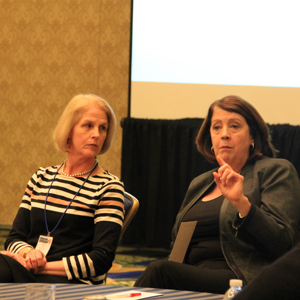 BALTIMORE – Whether taking care of siblings, working a job or just hanging out with friends, older teenagers have a lot of competing demands on their time after school. Getting them to show up regularly for an after-school program takes creativity, flexibility and a clear understanding of their needs, researchers and program managers said at a national conference here last week.
BALTIMORE – Whether taking care of siblings, working a job or just hanging out with friends, older teenagers have a lot of competing demands on their time after school. Getting them to show up regularly for an after-school program takes creativity, flexibility and a clear understanding of their needs, researchers and program managers said at a national conference here last week.
“By high school, they know what they want and you better deliver on it or they won’t come,” said Priscilla Little, initiative manager for the Wallace Foundation, which has supported research into after-school programming for the last decade.
The conference, “Better Together,” brought together nearly 400 public officials, educators, youth program leaders, nonprofit workers and funders in teams representing 57 different cities around the country. Organized in partnership with five youth-serving organizations – the Wallace Foundation, the American Youth Policy Forum, the Collaborative for Building After-School Systems, the Forum for Youth Investment, and the National League of Cities – its purpose was to share findings on effective after-school programming and encourage cities to better coordinate resources from multiple stakeholders.
Little’s work while at the Harvard Family Research Project showed that after-school programs boasting the best retention rates provided teens with at least five varied opportunities for leadership and sustained those opportunities for at least 12 months, she said.
Teens also stuck around for programs meeting their developmental needs, such as providing them with a safe environment in which they could take risks, explore new ideas, take on new challenges and meet new people, Little said.
“How the program was offered was just as important as what was offered,” Little said, describing a successful program as one that segregated after-school activities by age, held different expectations of attendance for older teens, and operated on a structure that made clear middle school and high school students were different.
Getting input from teenagers themselves about what they want to do is critical to retention, said Heather Clawson, vice president for research and evaluation at Communities in Schools.
In her previous work with military kids around the world, Clawson said, she witnessed many after-school programs operating with varying degrees of success. “I’ve seen beautiful facilities that are just empty. Empty,” Clawson said. “It’s not what the kids wanted.”
What kids want, she said, is often just a room that they can paint in the colors of their choice and where they hang out on beanbags.
High-schoolers are also less likely to stick with a program that is supervised by tired, worn-out teachers working a second shift. Hiring energetic instructors, such as local artists, dancers and singers, brings dynamism to a program and keeps teens engaged, said Mary Ellen Caron, chief executive officer of the Chicago-based After School Matters.
Caron told the story of a high school student who told her matter-of-factly one day that he had won a four-year scholarship to Oberlin College, which is known for its music program, even though his only exposure to vocal instruction had been at After School Matters.
“I get goose-bumps just telling you that,” she said.
Older teens also respond well to programs exposing them to science, technology, engineering and math-related learning, said Clawson, of Communities in Schools. Boys especially love projects that let them build robots or blow things up, she said. “Some girls do, too.”
Successful programs also recognize and reward teenagers’ efforts, provide opportunities for them to give back to their community, and provide them with mentors, Clawson said.
Attempting to adapt a younger age group’s curriculum to an older audience simply isn’t good enough to make high school students stay after school, Clawson said. She described a reluctant teenager who muttered to her, “I don’t want to come in and make macaroni necklaces.”
“There is a big difference between a tween and a teen, and they know it,” Clawson said. “Making sure that what you’re offering is developmentally appropriate is critical.”






























